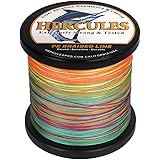Ever wondered if a fish could truly surprise you with a texture and flavor profile unlike any other? In the captivating video above, you witness Max reeling in his very first hogfish, a catch that sparks both curiosity and culinary intrigue. The real revelation, however, comes later in the kitchen when the hogfish fillets incredibly resemble pork belly, inspiring an exquisite Asian stir-fry for Guga. This unique seafood experience challenges expectations and highlights the unexpected wonders of the ocean.
Unveiling the Mysterious Hogfish: More Than Just a Funny Name
Firstly, what exactly is a hogfish, and why does it carry such a distinctive moniker? Scientifically known as Lachnolaimus maximus, the hogfish is a fascinating member of the wrasse family, easily identifiable by its prominent, hog-like snout and elongated dorsal fin. This unique snout isn’t just for show; it’s perfectly adapted for rooting around in the sandy seafloor, much like a pig, as it forages for mollusks and crustaceans. Its vibrant coloration, ranging from mottled reddish-brown to pinkish-grey, allows it to blend seamlessly into its reef habitat, primarily found in the tropical and subtropical waters of the western Atlantic, including the Gulf of Mexico and the Caribbean Sea.
This remarkable reef dweller is highly prized by anglers and chefs alike, not only for its challenging catch but also for its exceptional culinary qualities. Despite its somewhat intimidating appearance, including the “dental work” Max humorously pointed out, the hogfish is a delicate and delicious food fish. Understanding its natural behaviors and preferred environments offers valuable insight into why it stands out among other common seafood options. The name “hogfish” truly begins to make sense when you observe its foraging habits and then experience its unique flesh.
The Thrill of the Catch: Hooking Your First Hogfish
Secondly, catching a hogfish, especially your first, is an exhilarating experience that Max perfectly captured in the video. These intelligent fish are often found near rocky outcroppings, coral reefs, and wrecks, making them a favorite target for spearfishermen due to their often curious and less skittled nature. However, as Max demonstrated, they can certainly be caught with hook-and-line as well, typically preferring live baits like shrimp, crabs, or even small octopus. The fight can be quite spirited, with hogfish using their powerful bodies to pull towards structure, testing the angler’s skill and patience.
For those new to targeting this species, knowing their preferred diet and habitat is key. Anglers often find success drifting over reefs or anchoring near structure, using light tackle to feel the subtle bites of these cautious eaters. Landing a hogfish, particularly a sizeable one, is a memorable event for any fisherman, marking a significant achievement in the world of saltwater angling. Max’s excitement over his “first ever hogfish” perfectly encapsulates the joy and challenge inherent in pursuing these unique creatures of the deep.
The Culinary Revelation: Hogfish, the “Pork Belly of the Sea”
Moving on, the most astonishing revelation from the video is Max’s observation that the hogfish fillets looked “exactly like pork belly meat.” This isn’t just hyperbole; many culinary enthusiasts describe hogfish as having an incredibly firm, white, and surprisingly thick flake, often compared to pork or even scallops. The flesh typically has a beautiful, almost pearlescent sheen, and a distinct lack of “fishy” odor that can sometimes deter those hesitant about seafood. Unlike some flakier white fish, hogfish holds its shape exceptionally well during cooking, making it incredibly versatile.
This firm texture and rich, sweet flavor can be attributed to the hogfish’s diet of shellfish and its active lifestyle navigating reef systems. Its unique muscle structure and moderate fat content contribute to the pleasant mouthfeel that has earned it comparisons to premium meats. Preparing hogfish correctly means respecting this unique texture and flavor, ensuring it shines through in any dish. Max’s initial surprise upon filleting this fish is a common reaction among those who discover its remarkable resemblance to high-quality pork belly.
Mastering the Hogfish Kitchen: Beyond the Stir-Fry
Furthermore, inspired by the hogfish’s resemblance to pork belly, Max whipped up a “beautiful Asian stir-fry” for Guga, demonstrating just one of the many delicious ways to prepare this exceptional fish. An Asian stir-fry is an excellent choice for hogfish, allowing its firm texture to absorb vibrant flavors from soy sauce, ginger, garlic, and fresh vegetables without becoming mushy. Imagine tender pieces of hogfish quickly seared and tossed with crisp bell peppers, snow peas, and carrots, all coated in a savory, slightly sweet sauce and served over steaming jasmine rice.
However, the culinary possibilities for hogfish extend far beyond a single dish. Its firm, mild, and sweet flesh makes it incredibly adaptable to various cooking methods. Consider grilling thick hogfish steaks, allowing a slight char to enhance its natural sweetness, perhaps basted with a lemon-herb butter. Pan-searing is another fantastic option; a quick sear in olive oil or butter creates a beautiful golden crust while keeping the interior moist and tender. For a lighter touch, baking hogfish en papillote (in parchment paper) with cherry tomatoes, basil, and a splash of white wine steams the fish to perfection. Even raw preparations, like ceviche or sashimi, are possible due to its clean flavor and firm texture, often highlighting its delicate sweetness. Ultimately, when cooking hogfish, the goal is to enhance its natural attributes without overpowering its subtle yet distinctive flavor.








